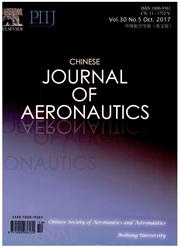

 中文摘要:
中文摘要:
在这份报纸,当昆虫正在徘回并且有各种各样的翻译、旋转的运动时,我们学习在 contralateral 翅膀之间并且在一只模型昆虫的身体和翅膀之间的空气动力学的相互作用,用数字地解决在移动上的海军司烧方程的方法搅乱格子。空气动力学的 interactional 效果被没有翅膀,比较一只完全的模型昆虫,相应翅膀对,单个翅膀和身体的结果识别。水平、垂直、侧面的翻译和转动,投球并且偏航以小速度的旋转被考虑。结果显示为考虑的运动,在 contralateral 翅膀之间的相互作用和在身体和翅膀之间的相互作用是弱的。在一个翅膀的力量和时刻的变化由于 contralateral 翅膀相互作用,通常由于翅膀的存在由于身体的存在,并且身体翅膀是不到 4.5% 。结果证明翅膀和身体的空气动力学的力量能在飞行稳定性的分析和徘回的昆虫的控制独立被测量或计算。
 英文摘要:
英文摘要:
In this paper, we study the aerodynamic interactions between the contralateral wings and between the body and wings of a model insect, when the insect is hovering and has various translational and rotational motions, using the method numerically solving the Navier-Stokes equations over moving overset grids. The aerodynamic interactional effects are identified by compar-ing the results of a complete model insect, the corresponding wing pair, single wing and body without the wings. Horizontal, vertical and lateral translations and roll, pitch and yaw rotations at small speeds are considered. The results indicate that for the motions considered, both the interaction between the contralateral wings and the interaction between the body and wings are weak. The changes in the forces and moments of a wing due to the contralateral wing interaction, of the wings due to the pres-ence of the body, and of the body due to the presence of the wings are generally less than 4.5%. Results show that aerodynamic forces of wings and body can be measured or computed separately in the analysis of flight stability and control of hovering in-sects.
 同期刊论文项目
同期刊论文项目
 同项目期刊论文
同项目期刊论文
 Dynamic flight stability of hovering model insects: theory versus simulation using equations of moti
Dynamic flight stability of hovering model insects: theory versus simulation using equations of moti 期刊信息
期刊信息
